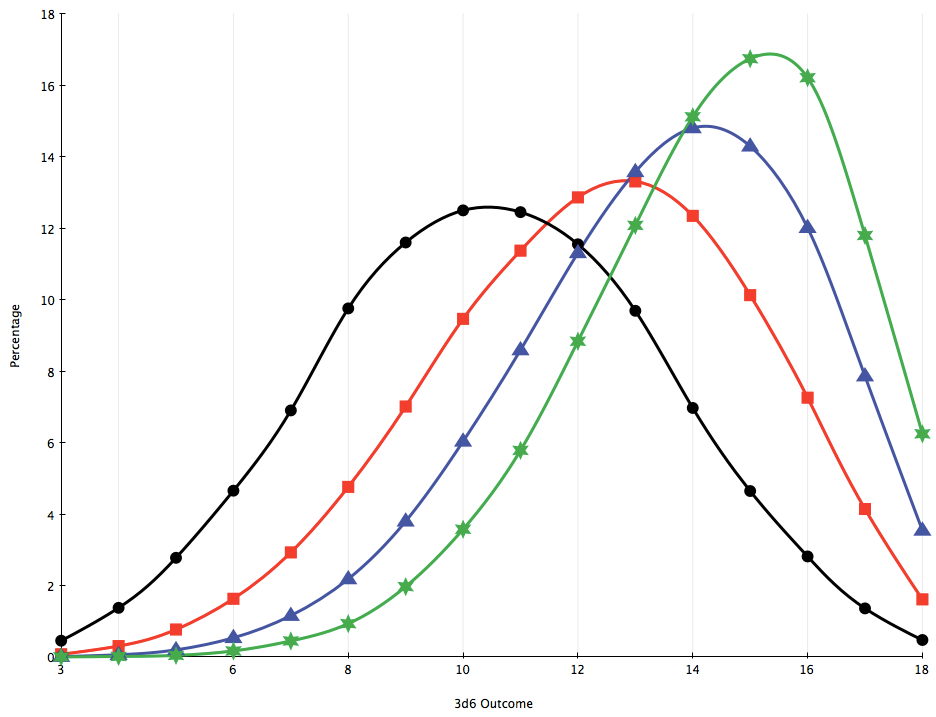One of the things that was usually nice about One Roll Engine’s dice mechanic is that it established two random vectors with a single roll. For example if a player rolled 3,5,5,6,6,6,7 the mechanics informed us that the roll was a 3×6 roll, where 3 was how Fast/Accurate it was, and 6 was how Strong/Much it was. This removed problems of, for example, rolling first to hit and then for damage. Or worse in some systems rolling to hit, and then location, and then damage, and then figuring out the ramifications of that damage.
Another feature that would be nice in a game is having some ability to control that matrix. Legend of the Five Rings had some of that with respect to duels, as waiting in duels increased ones effect but reduced ones ability to succeed. (Or at least that’s how I remember it)
So, here is the dice mechanic I am considering.
Continue reading “A proposed dice mechanic” →







